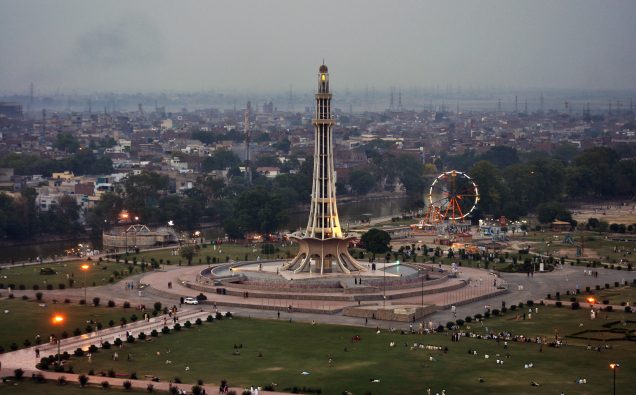
With 55% of the National Assembly seats, Punjab has shaped up to be the decisive battlefield for the July 25 election that pitches two of the largest Pakistani parties – PML(N) and PTI – in a neck-and-neck fight.
While Pakistan Tehreek-e-Insaaf, led by former cricketer Imran Khan, is banking on a newfound vigor, particularly among the new generation of voters, Pakistan Muslim League (N) of jailed former prime minister Nawaz Sharif, has traditionally drawn its strength from among right-leaning, pro-business and conservative middle class urban populations of the richest and the largest Pakistani province.
Pakistan Peoples Party of slain former prime minister Benazir Bhutto has some support among working class urban and rural populations but the party has not been able to revive its fortunes due to a lack of leadership and negative image of its current leader and former president Asif Ali Zardari.
Hanging over the political landscape is question about the role of Pakistani military, which Nawaz Sharif’s party claims has influenced court convictions of its leaders on corruption charges. Critics and political opponents, however, say the majority of troubles afflicting the PML (N) are of its own making.
The PTI, on the other hand, is allegedly the favorite of the military establishment but has also had a broader national appeal among voters than what its rival PML(N) has, particularly in Khyber Pakhtunkhwa province. In Balochistan, both PTI and PML(N) rely on local parties and are said to be faring almost equal. Sindh has long been a base for PPP, particularly its rural towns and villages. The urban Sindh including the largest Karachi city, has an unclear political scenario in the wake of the MQM party’s break up in various factions.
But it is the undecided or independent voters in the Punjab province, particularly, the central urban centers and large rural populations that will determine the outcome of the election.
The 2018 election, therefore, puts both PML(N) and PTI to a test. Whoever sells its manifesto, past performance or appeal of their leaders more convincingly to independent or undecided voters, will likely win more seats. In the current scenario, the PML(N) can play two cards – the victim card as both its leaders ,Nawaz Sharif and his daughter Maryam Nawaz, are in prison and the performance card at least in the province.
The PTI has its own advantages. It’s leaders are commonly perceived as far less corrupt as the party does not carry a tainted political baggage unlike its rival PML(N), whose leaders have long been around and have both supporters and opponents. Imran Khan, the PTI founder, has been able to sell his anti-corruption drive quite effectively with slogans of socioeconomic justice for the disadvantaged communities,
He took Sharif, once considered an invincible political force in his home province, to courts, where the PML(N) leader failed to satisfy courts about origins of his offshore wealth and properties and has been convicted and barred from holding any public office.
Yet, thee PML (N) retains a lot of support with its strong voters’ base in Punjab.
It’s been after a long time that the province is seeing this kind of fierce contest between two political parties. The 2013 election, which the PML(N) won had foretold of the close competition that the next election (2018) could hold out. Both the PML(N) and PTI bagged surprisingly high percentage of votes in cities of Lahore, Sialkot, Gujranwala and Faisalabad. In fact, Sharifs have rule the province during much of the last four decades and have deep roots.
Punjab has 148 National Assembly seats out of a total of 272 that voters elect directly through nationwide balloting.
An opinion survey, conducted jointly by Sustainable Development Policy Institute (SDPI) and the Herald magazine, reveals that the PTI has a four-point lead over PML(N) nationally, with PPP figuring third, five points behind the PML(N) which ruled the country from 2013 until May 2018.
The survey finds PML(N) leading in the province by a seven percentage advantage over PTI, mainly in the central districts. Outside central Punjab, Sharif’s advantages reduces by two points to five percentage.
An interesting finding of the survey says backers of both parties – almost 70 per cent – say they have a ‘strong’ or ‘very strong’ intent to turn up for a vote.
But nationally, in Balochistan and Khyber Pakhtunkhwa, security concerns might also determine the voter turnout in the face of spate of terrorist bombings that have killed several candidates and hundreds of citizens during the election campaign.
One hopeful trend for Pakistan’s moderate and progressive voices is that a large number of women, 171, are candidates in the election, which will mark only the second back-to-back democratic transition. The PPP won the election in 2008 while the PML (N) emerged victorious in 2013 election.















